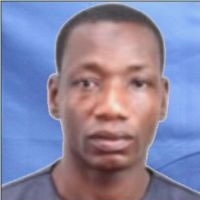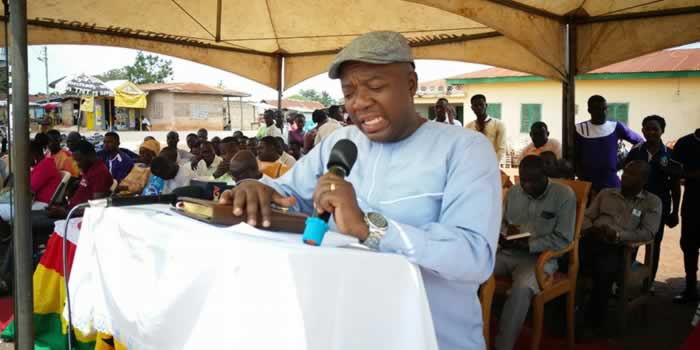

The overall development of a country is based on the production of goods and services. Critical to the production process is the human resource of the country. Although all persons irrespective of age, sex and economic activity status consume goods and services produced, only a section of the total population produces them: a working population often referred to as the “employed”.
The type of economic activity pursued is influenced by nature of the economy and level of socio-economic development (Hull, 2009). Generally, where larger proportion of the population is employed, more wealth is created thereby leading to improvement in the general well-being of the population.
The 2010 PHC collected information on economic activities of persons 5 years and older who worked for at least an hour in the seven days preceding the Census Night. The analysis however, is done with reference to the population aged 15 years and older. Information was also collected on those who did not work during the reference period but had jobs to go back to. This chapter presents information on the activity status, size and structure of the labour force, and its distribution by occupation, industry, sector of employment and employment status.
Economic Activity Status
According to the 2010 PHC, activity status refers to the economic or non-economic activity of respondents during the seven days preceding the Census Night. Economically active population refers to those who worked for pay, profit or family gain for at least one hour within the reference period, or did not work, but had a job to return to or was unemployed (worked before and seeking work and available for work or seeking work for the first time). Economically active population includes persons who were in paid employment or self-employed or contributing family workers; persons who did not work but had jobs to return to; and persons who were unemployed.
On the other hand, the economically not active population included those who were not employed and were neither seeking for work nor available for work. Thus, the economically not active population includes those engaged in home duties, full time education, on pension/retirement, disabled, sick, too old or young and others.
Table 4.1 presents information on population 15 years and older by activity status. The Table shows that the population 15 years and older in the District is 15,422 representing 54.0 percent of the total population out of which 54.2 percent are males. The proportion of the economically active (employed and unemployed) is 88.5 percent. The economically not active population constitutes 11.5 percent. Out of the economically active population, 98.7 percent are employed. The unemployed make up of 1.3 percent. The majority (60.2%) of the unemployed persons are first time job seekers and are available for work.
More males (89.4%) are likely to be economically active than the females (87.4%).The proportion of males employed is 98.7 percent compared 98.8 percent of females who are employed.
Concerning the economically not active population, more than one-half (53.8%) of the males are in full time education relative to 36.8 for the female population (Figure 4.1). The results of the analysis also show that males who perform the role of homemakers make up 14.5 per cent of the economically not active population compared with 29.4 percent of their female counterparts.
Economically Not Active
Table 4.2 shows the activity status of the population 15 years and older by sex and age in the District. The proportion employed is 87.4 percent; unemployed population constitutes 1.1 percent and the economically not active stands at 11.5 percent.
The age group 40-44 years has the highest proportion (97.3%) of its population employed. On the other hand, the age group 15-19 years has the least proportion (66.6%) of its population employed. As expected, 4.9 percent of the age group 60-64 years is unemployed while 1.1 percent of age group 65 years and older is also unemployed.
The age group 15-19 has 31.9 percent of its population being economically not active. The age group 40-44 has the least proportion (2.5%) of population considered economically not active. Table 4.2 further shows that 88.2 percent of the male population 15 years and older is employed, 1.1 percent is unemployed and 10.6 is economically not active. A proportion of 98.2 percent of age group 35-39 is employed.
The male age group 15-19 has the least of its population employed. The age group 20-24 has 2.4 percent of its population unemployed. There are no recorded cases of unemployment for age group 65 years and older. The economically not active within age group 15-19 is 32.7 percent while it is 1.4 percent for age group 35-39.
The percentage of the female population 15 years and older employed is 86.3 percent, 1.1 percent and 12.6 percent of them are unemployed and economically not active respectively. The female age group 45-49 has a proportion of 96.5 percent of its population employed and age group 65 years and older has 60.8 percent. Unemployment is highest for age group 60-64 (6.4%) while age groups 45-49, 50-54 and 55-59 have zero levels of unemployment. The proportion that is economically not active for age group 65 and older is 38.9 percent and it is low for age group 45-49 (3.5%).
Occupation
Occupation refers to the type of work that one is engaged in during the seven days preceding the census night, and those who did not work but had job to return to, as well as those employed who had worked before (2010 PHC). Table 4.3 shows that 89.6 percent of the employed population aged 15 years and older are skilled agricultural, forestry and fishery workers. The proportion of the population engaged as craft and related trade workers is 3.8 percent. The table further shows that 3.1 percent of the labour force are service and sales workers. Skilled agriculture, forestry and fishery remain the dominant occupation for both males (91.8%) and females (87.0%). The proportion of females in the service and sales occupation is 5.6 percent compare to 1.1 percent for the males. Similarly, 5.5 percent of the females are craft and related trade workers as against their male counterparts who have 2.3 percent of engaged in the same occupation.
Date Created : 11/24/2017 1:20:10 AM










 facebook
facebook
 twitter
twitter
 Youtube
Youtube
 +233 593 831 280
+233 593 831 280 0800 430 430
0800 430 430 GPS: GE-231-4383
GPS: GE-231-4383 info@ghanadistricts.com
info@ghanadistricts.com Box GP1044, Accra, Ghana
Box GP1044, Accra, Ghana